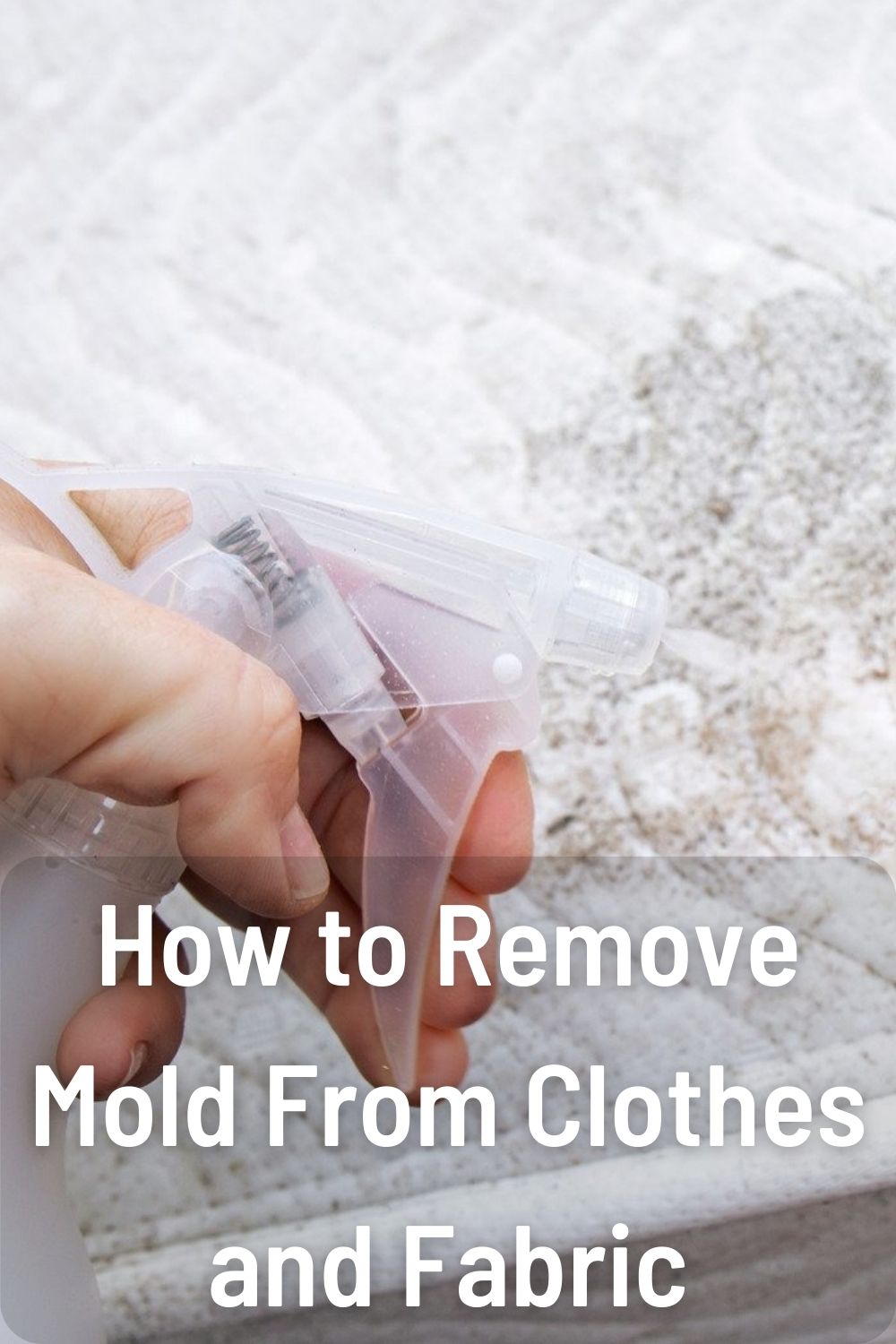
Mold can grow on clothes and fabric when they are exposed to moisture and humidity. Removing mold completely helps ensure the items remain usable and prevents mold spores from spreading further. This comprehensive guide covers how to identify mold, prevention tips, and proven methods to safely remove mold from clothes and fabric.
Table of Contents
Identifying Mold on Clothes and Fabric
Mold can appear in different colors and may look fuzzy or have spots. Some signs of mold growth on fabric include:
- Green, black, white, or gray fuzzy growth on the surface
- Musty, earthy smell coming from the fabric
- Stains that don’t come out with washing
- Spots or discolored patches
Pay close attention to areas like collars, underarm sections, pockets, and hems where moisture tends to collect. Look at both sides of the fabric to check for mold. Identifying it early makes mold easier to remove before extensive growth.
Prevention Tips
Preventing mold growth on clothes and fabric is easier than removing it after the fact. Here are some useful tips to help avoid mold:
- Allow wet clothes and fabric to completely dry before storing
- Check items stored in damp places like basements periodically for mold
- Wash clothes properly and avoid overcrowding the washer
- Clean the washing machine with bleach periodically to kill mold spores
- Store fabric in an area with low humidity
- Keep fabrics clean and avoid letting dirt or spills set
Proper care and storage go a long way towards preventing stubborn mold growth.
How to Remove Mold From Clothes
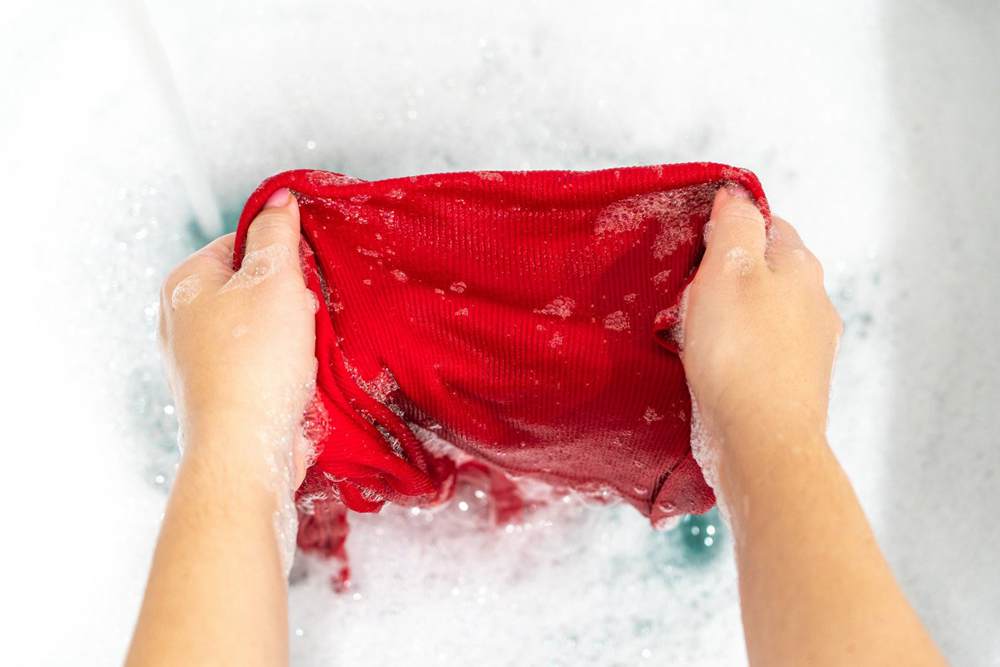
Clothes with mold need thorough cleaning to remove both surface growth and roots growing into the fibers. Here are the steps to get rid of mold from clothes:
1. Shake Out Loose Mold Outdoors
If there is heavy mold growth, take the item outdoors and shake it vigorously to remove loose spores. This helps limit circulation of mold in your home. Wear a protective mask to avoid inhaling the spores.
2. Launder in Hot Water With Bleach
Wash clothes in the hottest water recommended for the fabric. Add 1 cup of bleach and regular laundry detergent to kill mold and remove stains.
3. Dry Thoroughly on High Heat
Dry the laundered item completely on the highest heat setting appropriate for the fabric. The high temperature kills any remaining spores and prevents mold regrowth.
4. Repeat Laundering if Needed
Re-wash clothes that still show mold stains after drying. Multiple hot water washes with bleach help kill mold growing deep in the fibers. Let the item dry completely before wearing again.
5. Discard Items Too Damaged for Salvage
Sometimes mold damage is too severe for fabrics like cotton and linen to be salvaged. Discard items where mold has degraded the structural integrity of the material to avoid wearing unsanitary clothing.
Follow mold removal guidelines for washable fabrics. Avoid bleach and hot water for delicates prone to damage – instead opt for a vinegar solution detailed in the next section. With early intervention, most clothes can be safely restored after mold exposure.
Removing Mold from Upholstery and Other Fabrics
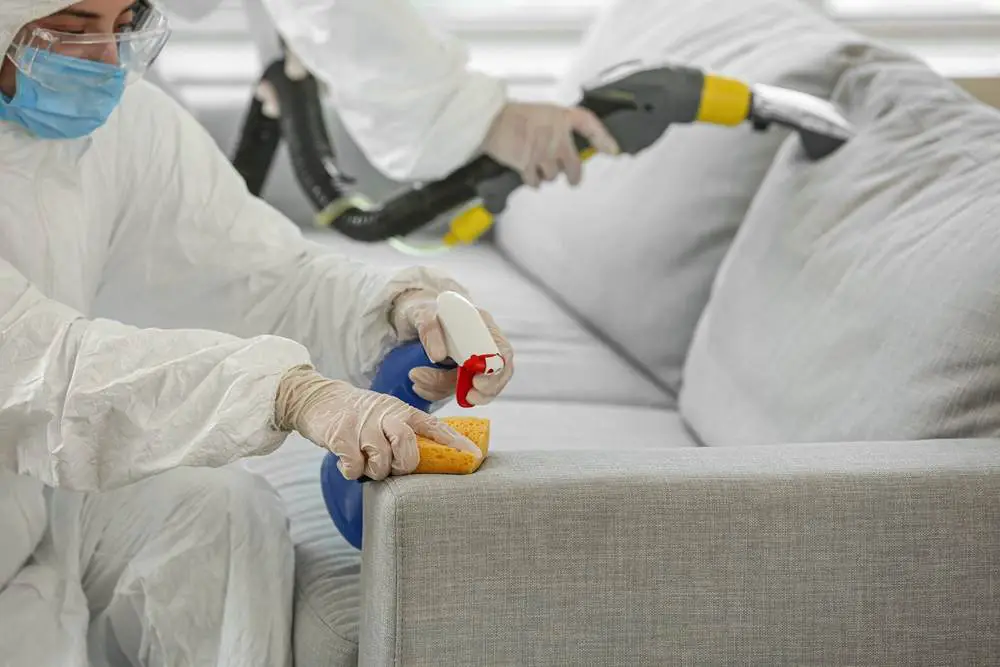
Upholstery, drapes, bedding, and other non-washable fabrics require special cleaning methods to get rid of mold and prevent ruining the material. Follow these guidelines to remove mold growth from fabrics:
Vacuum The Surface
Use a vacuum with a HEPA filter to remove loose mold spores on the surface of fabrics. This also sucks out mold roots growing on top. Dispose of the used vacuum bag securely right away.
Mix a Vinegar Cleaning Solution
Mix one part white vinegar with one part water in a spray bottle. The acetic acid in vinegar kills mold and stops growth.
Spray Fabric and Let Sit
Spritz the moldy area fully with the vinegar solution until damp. Avoid soaking the material. Let the solution sit for 1-2 hours.
Scrub and Blot
Use a soft brush or sponge to gently scrub the fabric. Then blot the solution out with clean towels. Avoid rubbing aggressively to prevent damaging the material.
Allow to Dry
Position a fan to increase air circulation and speed up drying of the fabric. Mold cannot grow in dry conditions.
Repeat as Needed
Reapply the vinegar solution to stubborn mold spots. Once dry, vacuum again to remove loosened mold residues.
With light mold growth, this should completely clean upholstery and other delicate fabrics. Consult professional cleaners for extensive mold damage, who use specialized chemicals and tools.
How to Remove Mold from Leather
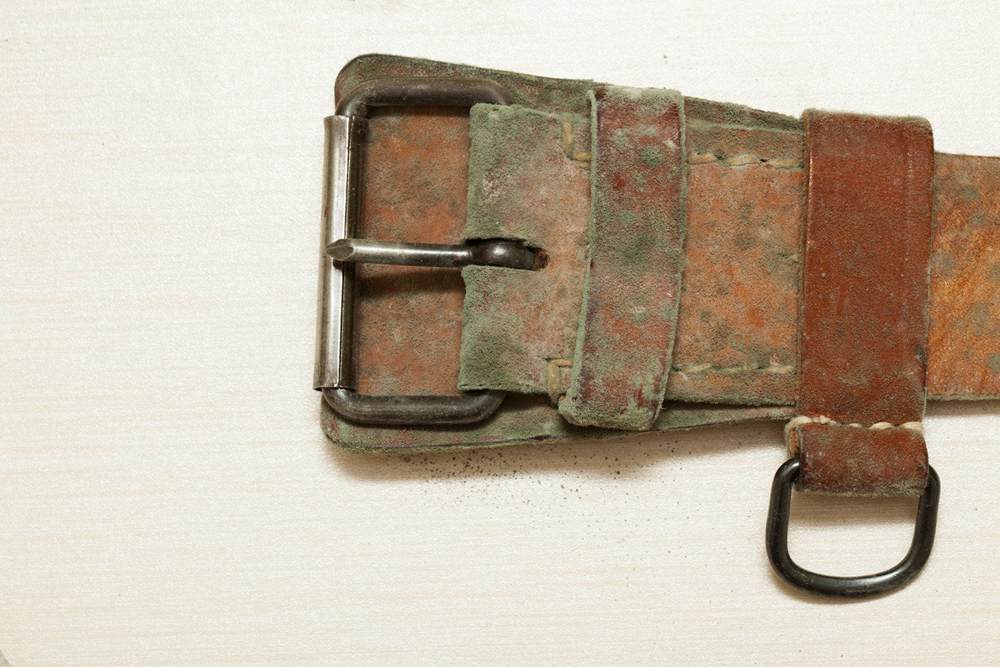
Leather is prone to mold damage from moisture exposure. Follow these steps to clean mold growth on leather items:
Wipe Away Dry Residue
Use a dry cloth to wipe off any dry mold on the surface of the leather. This removes loose spores.
Create Vinegar Solution
Mix equal parts white vinegar and water in a spray bottle as an effective anti-mold solution for leather.
Spray and Wipe
Spritz vinegar solution onto the moldy spot and let sit briefly. Then wipe clean using a soft cloth, with light pressure only.
Dry Thoroughly
After wiping away the solution, allow leather to dry completely. Use a fan to speed up drying and prevent remolding.
Condition the Leather
Once fully dry, apply a leather conditioner containing tea tree or eucalyptus oil. This prevents mold regrowth and nourishes the leather.
Avoid using bleach, chemical cleaners, or heat to dry leather. Test vinegar solution on a small hidden area first to check for color fastness. With light mold growth, this method can restore leather without damage.
Mold Removal from Books
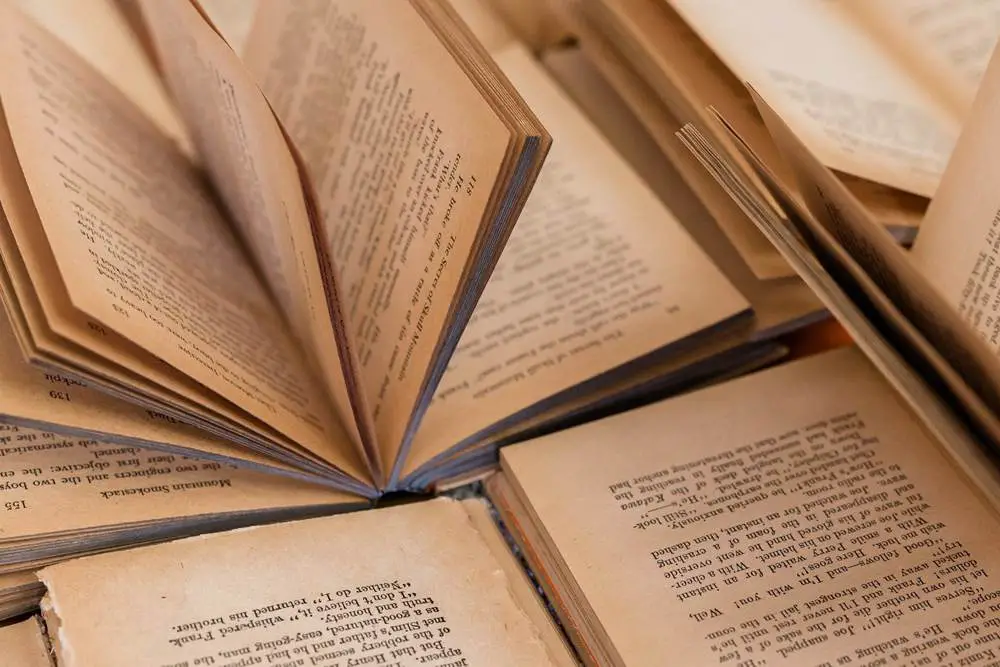
Books stored in damp basements or garages often get moldy covers and pages. Here are some DIY methods for cleaning mold from books:
Remove Loose Spores
Use a soft brush to gently remove any mold on the book’s cover and spine. This eliminates surface-level spores.
Seal In Loose Spores
To contain mold residues within the pages, apply sealant spray to the edges of the book’s pages. Allow to dry completely.
Sanitize With UV Lamp
Use a UV-C germicidal lamp to sanitize entire book. Exposure to the UV rays kills mold spores and growth.
Dehumidify Storage Space
Keep books in a dehumidified space with moisture absorbers. This prevents reoccurrence of mold growth. Discard books too damaged by moisture for recovery.
With valuable antique books, consult a professional book conservator for mold removal instead of attempting DIY methods. Handle old books carefully and avoid vacuuming.
How to Prevent Mold Growth on Fabric
Preventing mold development on fabric is more effective than treating it after growth occurs. Here are great tips for keeping mold away from clothes and other fabrics:
- Allow wet fabric to dry completely before storage. Dampness encourages mold growth.
- Check stored items regularly for mold. This allows early treatment before extensive colonization.
- Disinfect washing machines monthly with bleach to kill laundry mold.
- Use mesh wash bags for delicates to allow water circulation and drying.
- Store fabric items in breathable containers, not airtight plastic.
- Add silica gel packs to storage bins and closets to absorb moisture.
- Keep storage areas clean and vacuum carpets to remove mold spores.
- Fix any water leaks and clean up flooding immediately to dry out areas.
- Maintain low indoor humidity through air conditioning and dehumidifiers.
With proper precautions, clothes, upholstery, and other treasured fabrics can stay free of stubborn mold damage.
Frequently Asked Questions (FAQs) About Removing Mold From Fabric
Q: How do you know if mold can be removed from fabric versus needing to be discarded?
Mold damage that is purely superficial and on the surface has good chances of being removed with thorough cleaning. However, discard fabric where mold has degraded its internal structure and affected its integrity. Test a hidden area after cleaning to check if the texture feels damaged or rotten. Severely molded natural fibers like cotton and silk are often impossible to restore fully.
Q: Can you save a mattress with mold growth?
It is not recommended to try and salvage a mattress with extensive mold contamination. The mold roots penetrate deep inside and cannot be fully killed. Replace any mattress with signs of mold, mildew or water damage to avoid health issues.
Q: What temperature kills mold on fabric?
Heat of 120°F to 140°F effectively kills mold and its spores. Laundering fabric in the hottest water suitable for the material followed by drying on a high heat cycle generates sufficient heat to destroy mold. Ironing fabric on the highest setting also kills mold through high temperature.
Q: Can you put moldy clothes in the dryer?
Dryers do NOT kill mold on their own, unlike washing machines. Clothes need to be laundered with hot water and bleach first to remove mold growth. Then drying on high heat prevents remolding by eliminating residual moisture. Avoid putting wet, moldy clothes straight into the dryer. The heat can set stains and transfer spores onto other items.
Q: Does vinegar really kill mold on fabric?
Yes, vinegar is highly effective for killing mold and preventing regrowth on most fabrics. The acetic acid in diluted vinegar penetrates material and kills both surface mold and roots. A vinegar solution is recommended for delicate fabrics that cannot withstand bleach or heat treatments. As a natural cleaner, it does not leave toxic chemical residues either.
Conclusion
Mold growth in clothes, upholstery, books, and other fabric items can happen from just small amounts of moisture. Catching it early and using appropriate removal methods saves beloved possessions from permanent damage. With preventative steps and maintenance, fabrics can stay free of unwelcome mold contamination for the long term.